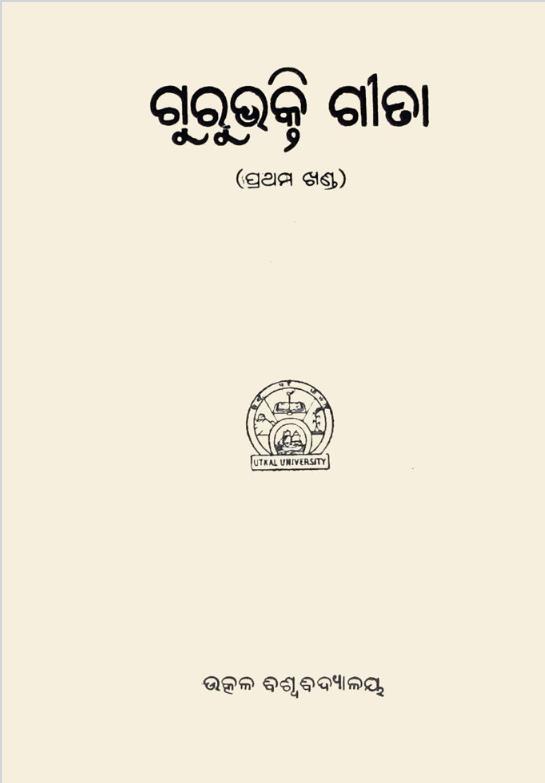Published in 1930 (reprinted in 1970), Gurubhakti Gita stands as a significant literary and philosophical contribution authored by the revered Achyutananda Das, an influential saint and philosopher in the Vaishnavism tradition of Odisha. This work, enriched by the editorial insights of Arta Ballabha Mohanty, delves into the profound concepts of devotion, spirituality, and the intrinsic relationship between a disciple and their guru, emphasizing the tenets of Bhakti (devotional love) within a spiritual context.
Achyutananda Das, a prominent figure in the 16th-century Bhakti movement, is noted for his role in shaping the spiritual landscape of Odisha. He is revered not only for his poetic prowess but also for his deep philosophical insights that engage with the core of human existence and divine connection. The “Gurubhakti Gita” encapsulates these teachings in a manner that remains both accessible and profound.
The Gurubhakti Gita is structured around the metaphorical dialogue between a seeker and the guru, addressing themes such as the nature of divinity, the importance of faith, and the disciplined practice of devotion as a means of achieving spiritual enlightenment. Achyutananda masterfully articulates the intricate dynamics of guru-disciple relationships, portraying the guru as a divine guide whose insights illuminate the path of Bhakti. This relationship is depicted not merely as a transactional one but as a deep spiritual communion that facilitates the seeker’s journey towards self-realization and union with the divine.
In this work, the themes of surrender and humility are predominant, highlighting that true spiritual progress emanates from the heartfelt devotion to the guru, who embodies the essence of divine wisdom. The text emphasizes the significance of surrender, suggesting that in relinquishing the ego and embracing divine will, the devotee experiences an elevated state of consciousness. Achyutananda’s use of metaphor and poetic expressions enriches the narrative, inviting readers to not only comprehend the teachings intellectually but to feel them viscerally within their own spiritual practices.
Moreover, the Gurubhakti Gita also addresses the broader societal implications of devotion, asserting that a true devotee cultivates virtues such as compassion, humility, and selflessness. This aligns with the overarching goals of the Bhakti movement, which seeks to transcend caste distinctions and emphasize love and devotion towards God as the highest form of spiritual practice.
The editorial contribution of Arta Ballabha Mohanty enhances the clarity and accessibility of Achyutananda’s profound teachings, ensuring that the philosophical depth of the text resonates with modern audiences while maintaining the richness of its traditional roots. Mohanty’s insights facilitate a better understanding of the cultural and historical contexts that shape the narrative, making it a valuable resource for scholars and spiritual seekers alike.
Books Info
| Books name | Gurubhakti Gita / ଗୁରୁଭକ୍ତି ଗୀତା |
| Author | Achyutananda Das; Arta Ballabha Mohanty, Ed. |
| No Of pages | 299 |
| Publisher | NA |
| Publication | 1930 (Prachi), 1970 |
| Printed At | NA |
| Distributor | NA |

